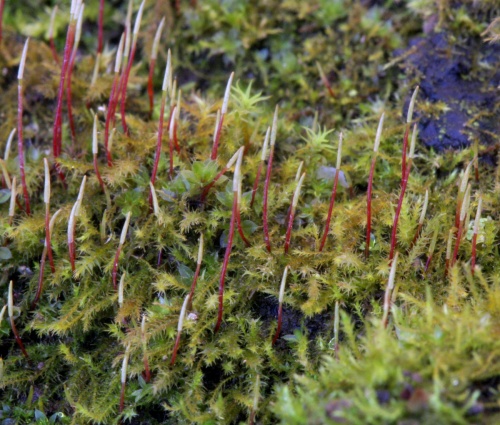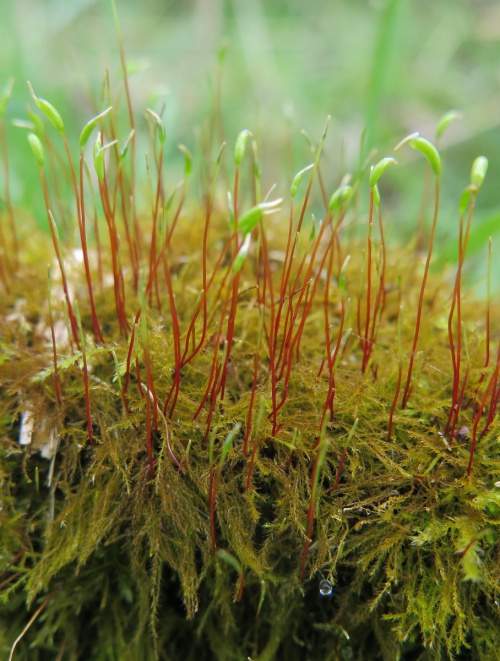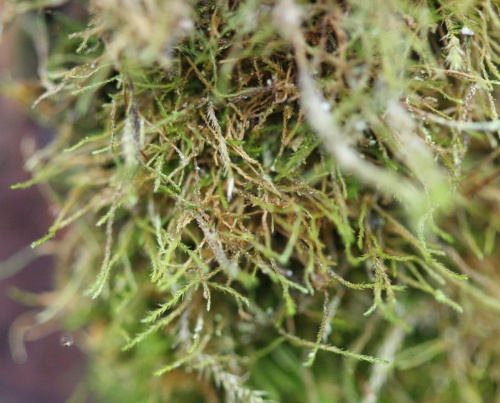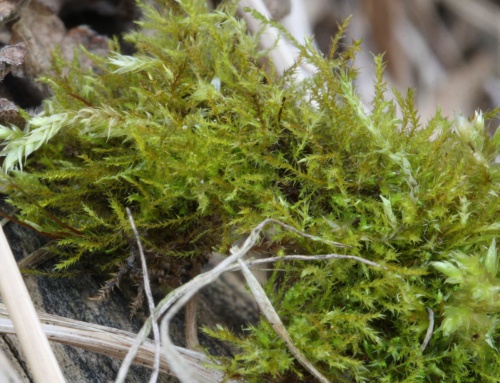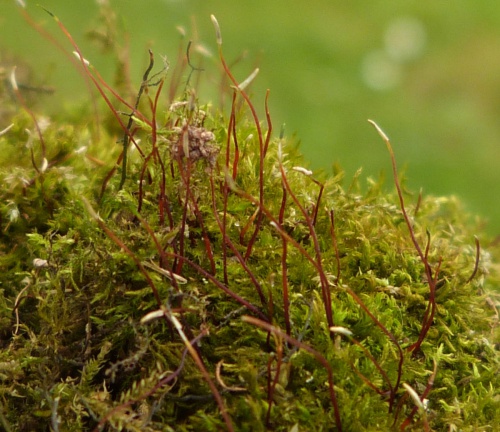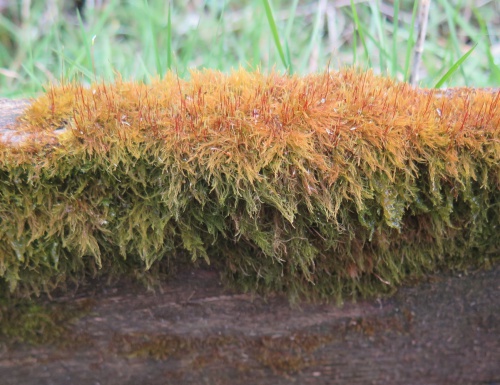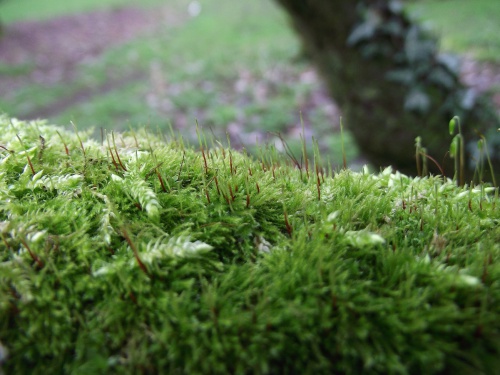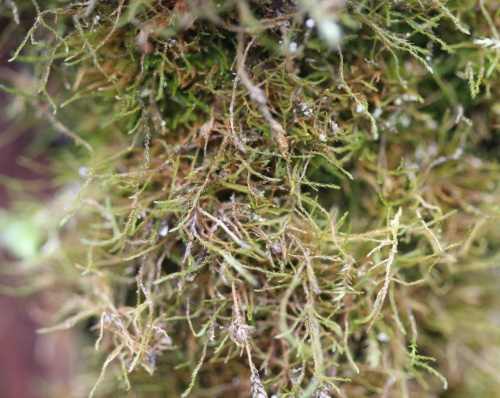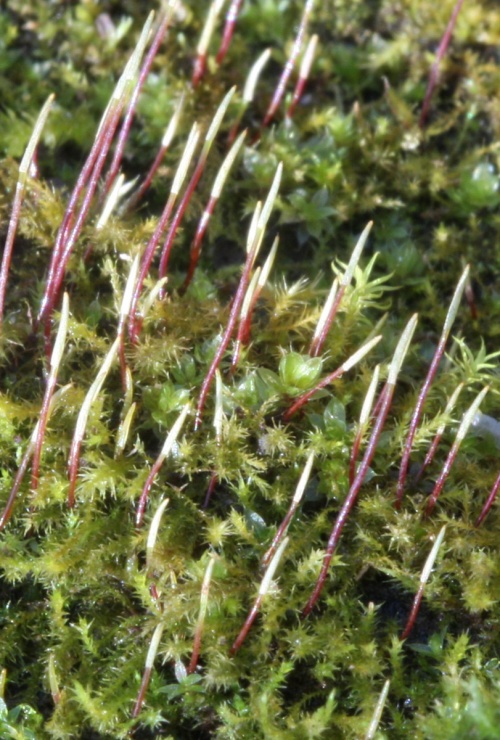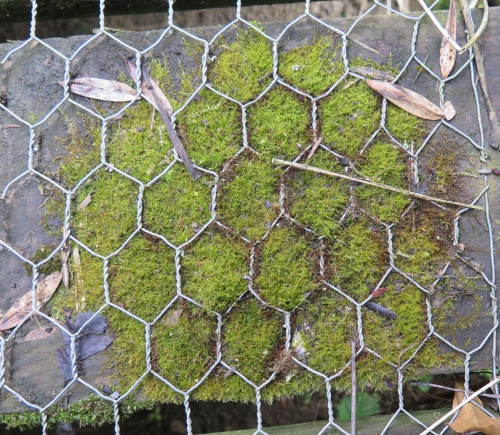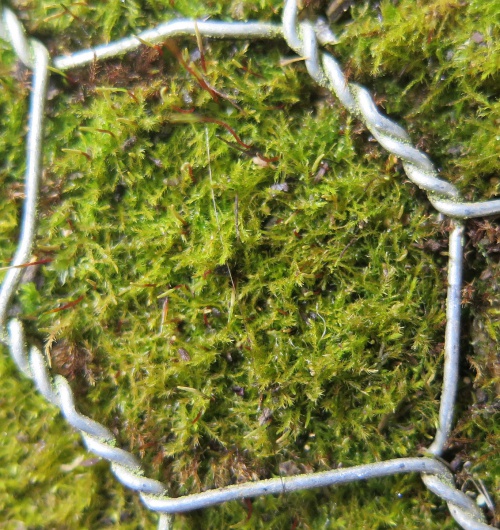Creeping Feather-moss - Amblystegium serpens
The mid- to dark green, irregularly branched, 1 to 2 cm long shoots may form extensive, intricate patches. Stem leaves are very small (normally only about 0.5 mm long), erect or erect-spreading, narrowly egg-shaped, with a tapering tip, and often rather markedly narrowed at about mid-leaf. The nerve is single, but difficult to see with a hand lens, and does not extend beyond mid-leaf. Branch leaves are very similar, but even smaller. Capsules are common, to about 2 mm long, curved and cylindrical, borne on a long seta, and have a conical lid.
A. serpens favours moist or sheltered places, and grows on both living and dead wood in woods and hedges, where it often abounds on old elders (Sambucus nigra). It also occurs on soil and stones on banks, beside streams and rivers, at the base of walls, and sometimes on man-made habitats such as tarmac.
All year round
Widespread and fairly frequent in Britain.
Fairly frequent in Leicestershire and Rutland.
Leicestershire & Rutland Map
Enter a town or village to see local records
MAP KEY:
Yellow squares = NBN records (all known data)
Coloured circles = NatureSpot records: 2020+ | 2015-2019 | pre-2015
UK Map
Species profile
- Common names
- Creeping Feather-moss
- Species group:
- Mosses & Liverworts
- Kingdom:
- Plantae
- Order:
- Hypnales
- Family:
- Amblystegiaceae
- Records on NatureSpot:
- 24
- First record:
- 10/11/1991 (Dennis Ballard)
- Last record:
- 14/01/2021 (Nicholls, David)
Total records by month
% of records within its species group
10km squares with records
The latest images and records displayed below include those awaiting verification checks so we cannot guarantee that every identification is correct. Once accepted, the record displays a green tick.
In the Latest Records section, click on the header to sort A-Z, and again to sort Z-A. Use the header boxes to filter the list.


